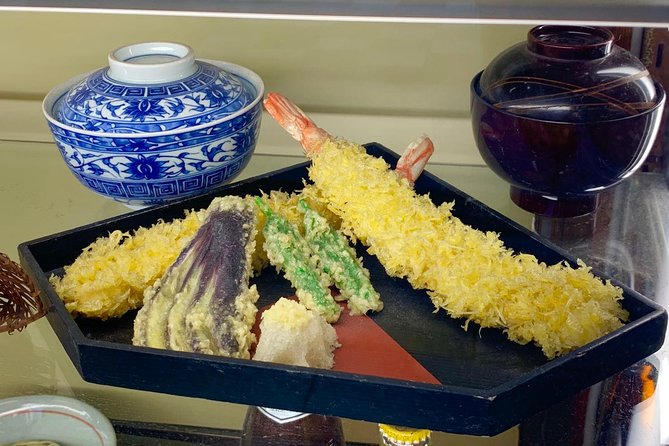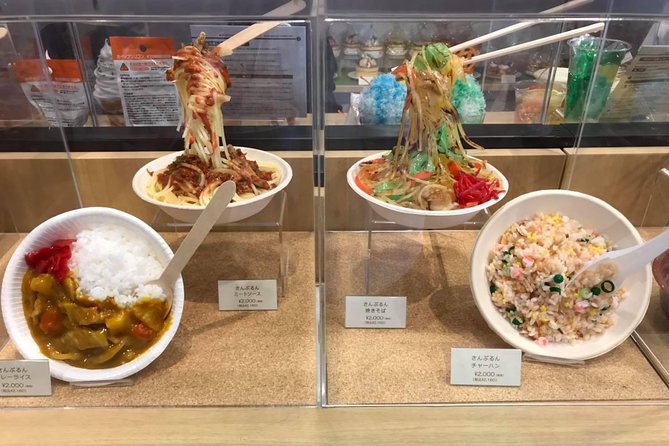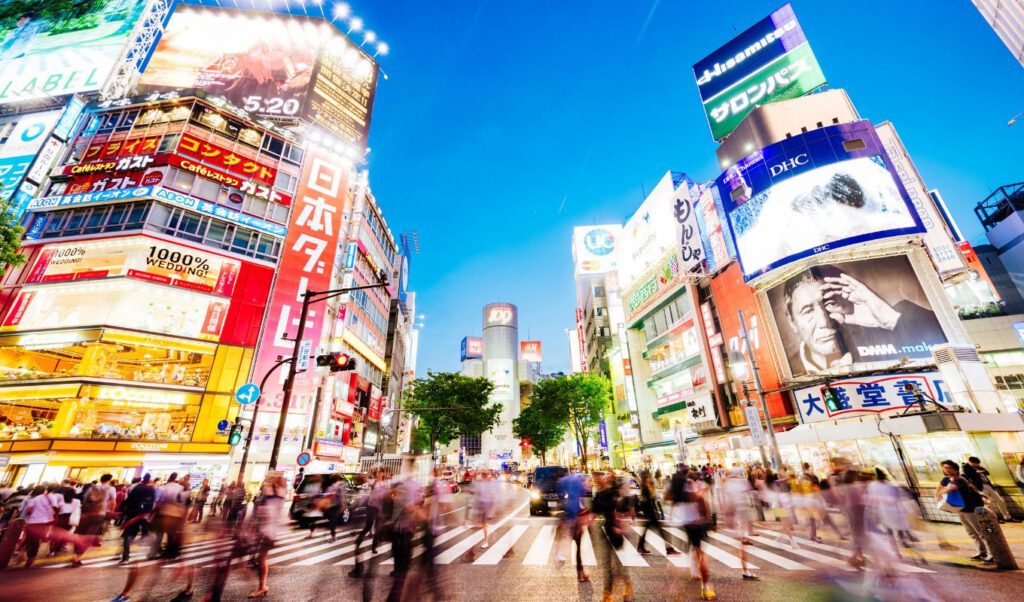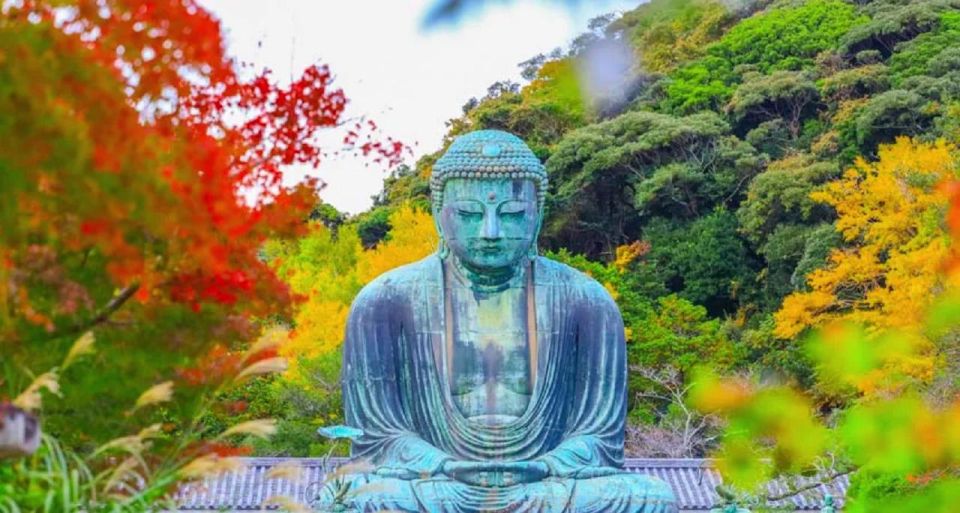Visitors to Tokyo recently had the chance to step into the world of Japanese sample food making by participating in a workshop where they crafted their own tempura Sampuru. The intricate process of creating these lifelike food replicas fascinated participants as they learned about the historical origins and meticulous techniques involved.
But what makes this experience truly special? Stay tuned to discover the unexpected connection between fake food production and a traditional Japanese art form, offering a unique perspective on culinary craftsmanship that is sure to pique your interest.
Key Points

- Experience the art of making fake food (Sampuru) in Tokyo’s Kappabashi district.
- Learn about the history and craftsmanship behind Japanese fake food production.
- Enjoy a hands-on workshop to create tempura Sampuru with an English-speaking instructor.
- Explore Asakusa Sensoji Temple and indulge in a unique cultural and culinary experience.
Experience Details

Set out on a captivating 3-hour tour in Tokyo, Japan, delving into the art of fake food making through a small group experience with a maximum of 15 participants. This experience provides a unique opportunity to witness the intricate craftsmanship techniques involved in creating Sampuru, also known as fake food. Participants won’t only engage in hands-on workshops but also gain insights into the cultural significance of this traditional Japanese art form.
The tour encompasses visits to Kappabashi, a renowned kitchenware district, and the historic Asakusa Sensoji Temple. With an English-speaking instructor guiding the way, attendees will explore the history of Sampuru production while seeing the fascinating world of Japanese sample food.
Fake Food Craft
The art of crafting fake food, known as Sampuru, involves meticulous techniques using plastic or wax to create lifelike replicas of various dishes. These creations play a significant role in Japanese cuisine, enticing customers with their realistic appearance.
Key Points:
- Sampuru technique: Mastering the intricate art of creating fake food requires precision and dedication.
- Japanese cuisine: Fake food plays a vital role in representing the diverse and visually appealing dishes of Japanese cuisine.
- Attention to detail: Each piece is carefully handmade, taking hours to weeks to ensure every aspect mirrors the real dish accurately.
Crafting these imitation delicacies demands patience and skill, making it a revered art form that continues to captivate audiences worldwide.
Making Experience and History Tour

Exploring the fascinating world of fake food craft, the Making Experience and History Tour offers a hands-on opportunity to create tempura Sampuru while immersing participants in the rich history and artistry behind this unique culinary tradition in Tokyo, Japan.
Participants explore the Tempura history and crafting techniques, gaining insight into Japanese culinary traditions with a modern twist. Available on Tuesdays, Thursdays, and Sundays, this 3-hour tour of Kappabashi and Asakusa Sensoji Temple provides a workshop where both children (7 years old and above) and adults can enjoy making their own fake food samples.
Plus, an optional 4 or 6-hour Tokyo tour can be added, along with a delightful lunch at Japan’s oldest tempura restaurant, making this experience a perfect blend of creativity, culture, and culinary exploration.
Preparation and Cancellation Policy

Before participating in the Japanese Sample Food Making Experience, guests are advised to carefully review the preparation and cancellation policy details to ensure a smooth and enjoyable tour.
- Refund Policy: Non-refundable experience, price varies by group size.
- Group Size: Maximum of 15 travelers.
- Cancellation Fee: Moderate cancellation policy with a service fee of 15% of the total tour cost for cancellations after planning starts.
These policies are important to note as they outline the guidelines for attire, cancellation fees, and group size limitations. Plus, considering weather conditions and the possibility of cancellation fees can help participants plan accordingly for this unique and engaging experience.
Reviews

Receiving glowing feedback from participants, the Japanese Sample Food Making Experience boasts a perfect 5.0 rating based on 9 reviews, highlighting the enjoyable and easy process of creating sample Japanese food under the guidance of Hitomi, the tour guide. Participants expressed high satisfaction with Hitomi’s performance, praising her knowledge and support throughout the workshop.
Many reviewers noted how Hitomi’s guidance made the experience not only educational but also engaging and fun. The positive reviews consistently mentioned the seamless flow of the workshop and the clear instructions provided by Hitomi, allowing participants to craft their sample Japanese food with ease.
Workshop Information

The Workshop Information for the Japanese Sample Food Making Experience includes details on the hands-on experience of creating tempura Sampuru, available on select days in Tokyo, Japan. Participants engage in crafting techniques to create intricate food replicas, delving into the artistry of Japanese culture. The workshop provides insights into the meticulous process behind these culinary art pieces, offering a unique glimpse into the world of fake food production.
Through expert guidance, visitors learn the history and skill required to master this traditional craft, enhancing their appreciation for the intricate details that make these replicas so realistic and captivating.
- Hands-on experience creating tempura Sampuru
- Crafting techniques for food replicas
- Exploration of culinary art and Japanese culture
Attire Recommendation

Participants are advised to dress comfortably and appropriately for all weather conditions during the Japanese Sample Food Making Experience. Attire suggestions include wearing casual and breathable clothing that allows for ease of movement while cooking.
Since the workshop may involve handling food ingredients, it’s recommended to avoid wearing nail art or polish to maintain hygiene standards. Comfortable closed-toe shoes are advisable for walking during the history tour.
Workshop tips suggest bringing layers in case of changing weather conditions as the experience may include indoor and outdoor activities. Plus, participants should consider wearing sunscreen and hats for outdoor portions of the tour.
Booking and Payment Details

For individuals interested in participating in the Japanese Sample Food Making Experience, the booking and payment details provide essential information for securing a spot in this unique culinary adventure.
-
Payment Options: Payment can be made online or in person on the day of the experience.
-
Reservation Process: Reservations can be made up to 3 months in advance to ensure availability.
-
Group Size Restrictions, Age Requirements: The experience can accommodate a maximum of 15 travelers per session, and participants must be at least 7 years old to join in the fun.
These details ensure a smooth booking process and help guarantee an enjoyable time for all participants.
Common questions
What Is the Significance of Asakusa Sensoji Temple in Japanese Culture?
Asakusa Sensoji Temple in Tokyo holds immense cultural and historical importance. It’s a symbol of traditional art and religious practices in Japanese culture. The temple’s influence spans generations, attracting visitors worldwide to experience its rich heritage.
How Does the Process of Creating Fake Food Differ From Other Forms of Traditional Japanese Art?
In the artistic process of creating fake food, unique creative techniques using traditional materials are employed, differing from other Japanese art forms. The meticulous craft of crafting lifelike replicas showcases cultural significance and technical mastery.
Are There Any Special Techniques or Materials Used in the Making of Tempura Sampuru?
Crafting techniques for tempura sampuru involve using specialized molding methods to create realistic food replicas. The key lies in replicating the texture and appearance of tempura batter through intricate detailing, ensuring each piece captures the essence of this traditional Japanese dish.
Can Participants Take Home the Fake Food They Create During the Workshop?
Participants can take home their creations from the workshop souvenirs. This allows them to cherish and display the fake food made during the session. It serves as a tangible reminder of the fun and learning experience.
Are There Any Specific Safety Precautions or Guidelines to Follow During the Fake Food Making Experience?
When participating in the workshop experience, attendees must adhere to specific safety precautions and guidelines. These include proper handling of materials used, following the instructor’s instructions, wearing appropriate attire, and maintaining a safe environment throughout the activity.
Last Words
Set out on a captivating journey into the world of Japanese sample food making in Tokyo. Craft your own tempura Sampuru and discover the secrets behind this unique culinary art form.
With a hands-on workshop, historical insights, and small group sizes, this experience offers a truly immersive and educational experience for participants aged 7 and above.
Enjoy the intricate craft of fake food production and create your own masterpiece to take home.
Book now for an unforgettable culinary adventure!

